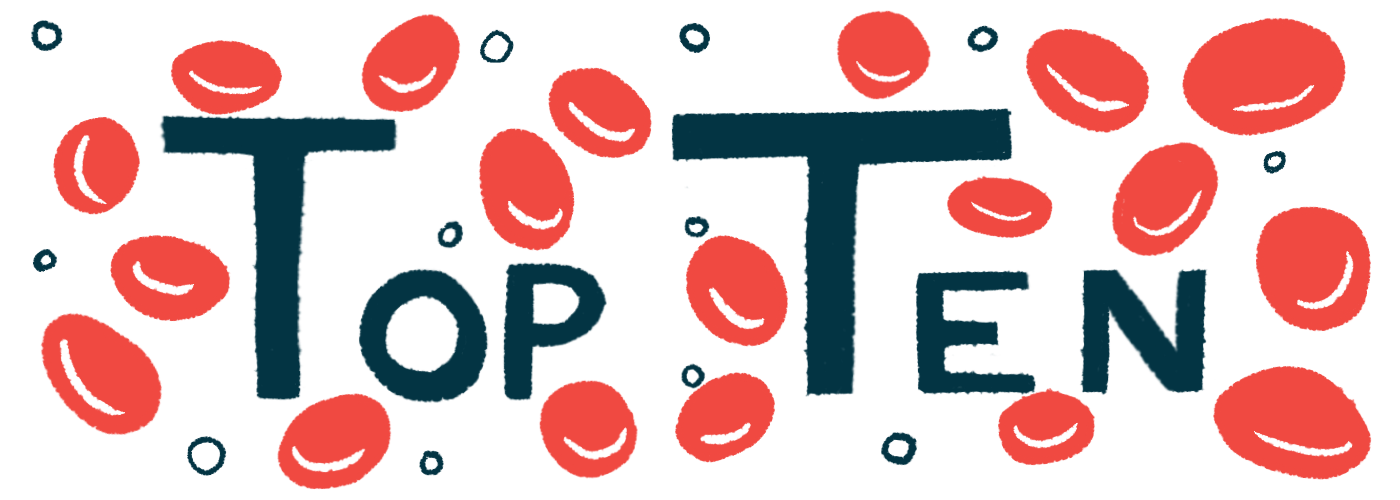Top 10 ANCA-Associated Vasculitis Stories of 2022
A recap of the most-read stories of the year in ANCA-associated research

Over the past year, ANCA Vasculitis News has brought you coverage of the latest developments in research related to ANCA-associated vasculitis (AAV).
We look forward to continuing to bring you news about advances in research and treatment in the new year. Here we have compiled a list of the top 10 most-read articles published in 2022.
No. 10 — “Immune Cells Work as ‘Friend and Foe’ in ANCA-associated Vasculitis”
Macrophages are a type of inflammatory immune cell important for fighting off infections, but also can contribute to the autoimmune attack that drives AAV. Researchers showed that circulating macrophages in the bloodstream get recruited to the lungs and drive lung damage in a mouse model of AAV. Depleting macrophages in the bloodstream led to less lung damage. Conversely, deleting macrophages that reside in the lungs’ tiny air sacs (alveoli) where gas exchanges take place led to more severe lung damage, suggesting these macrophages are protective. Results suggested that both the disease-driving effects of circulating macrophages and the protective effects of alveolar macrophages were mediated in part by molecular systems that cells use to detect DNA from infecting viruses and bacteria.
No. 9 — “B-cell Levels May Predict COVID Vaccine Response in Patients on Rituximab”
B-cells are the main type of immune cells responsible for making antibodies. Many antibodies are important for fighting off infections, but some like ANCAs can drive diseases, such as AAV. Rituximab, a therapy that depletes B-cells, is approved to treat certain B-cell cancers and is frequently used off-label to manage AAV. Its use may diminish an antibody response to vaccination, however. Here, researchers analyzed 61 people who’d been vaccinated against COVID-19, including 19 with AAV or rheumatoid arthritis treated with rituximab. They found that, among rituximab-treated patients, those with B-cell counts of 10 B-cells per microliter of blood or higher were generally able to mount an effective vaccine antibody response.
No. 8 — “Tavneos Plus Rituximab Safe and Effective in Real-world Use”
Tavneos (avacopan) is an oral anti-inflammatory medicine that’s been recently approved as an add-on AAV treatment in the U.S., Europe, and other regions. Researchers in France analyzed nine adult AAV patients treated with the therapy in combination with rituximab. All but one were in complete disease remission after a year and measures of kidney function were stable, with trends towards improvement seen in some patients. The therapy combination was also found to be safe and generally well tolerated. They also found the levels of a protein called CD163 in the patients’ urine decreased substantially after treatment, supporting its use as a potential disease biomarker.
No. 7 — “Some Patients on Rituximab Fail to Mount Robust T-cell Response to COVID-19 Vaccine”
Like other vaccines, those for COVID-19 work by activating the body’s immune system against a threat, prompting the production of antibodies against the virus and the generation of infection-fighting T-cells. Since rituximab depletes B-cells that are mainly responsible for producing antibodies, many patients on it have a weakened antibody response to vaccines. Here, researchers evaluated the response to the Pfizer-BioNTech COVID-19 vaccine in 28 people with AAV and other conditions who were being treated with rituximab. Results showed most patients didn’t develop an antibody response after vaccination and more than 40% failed to generate a T-cell response.
No. 6 — “AstraZeneca COVID-19 Vaccine Tied to AAV-related Kidney Damage”
Vaccines work by activating the immune system and some studies have suggested they may cause autoimmune diseases to worsen in some cases. Here, researchers in Mexico described the case of a 51-year-old woman with no history of disease, who began having symptoms such as fever, nausea, and low appetite and energy after the third dose of the AstraZeneca COVID-19 vaccine. On clinical examination, the woman was found to be positive for ANCAs and she also had a co-occurring health condition, called uremic syndrome, that causes damage to the kidneys. Scientists emphasized that it’s impossible to definitively conclude whether the vaccine caused the conditions to arise in this case, but highlighted a need to monitor for similar complications.
No. 5 — “Little UV Exposure, Low Vitamin D Levels Tied to Relapse Risk in AAV”
Cells in the skin use energy from ultraviolet (UV) light to make vitamin D, a nutrient that helps regulate immune activity, among other functions. Here researchers assessed the relationship between UV exposure, vitamin D levels, and AAV activity using data from more than 400 patients recorded in the Irish Rare Kidney Disease Registry. Analyses indicated lower UV exposure and lower vitamin D levels were associated with an increased risk of relapses (instances where symptoms suddenly worsen, also called exacerbations, or flares). The association was seen across different AAV types.
No. 4 — “COVID-19 Exposure Could Trigger AAV, Case Report Suggests”
Researchers in the U.S. and Jordan reported the cases of two women who developed AAV shortly after being exposed to COVID-19 proteins: one through infection and the other through vaccination with the Moderna vaccine. Both were diagnosed with AAV shortly after symptoms manifested and their conditions improved with treatment. The team highlighted the importance of early diagnosis for optimizing outcomes for AAV as a potential rare consequence of COVID-19 exposure.
No. 3 — “Case Links Pfizer-BioNTech COVID Vaccine to AAV Kidney Damage”
Scientists in the U.S. and Lebanon described the case of a 47-year-old woman who began having unexplained lower back pain, generalized weakness, and leg swelling after she received the Pfizer-BioNTech COVID-19 vaccine. Upon clinical investigation, she was found to have AAV-related kidney disease. A kidney biopsy revealed scar tissue, which researchers said suggests the woman might have had AAV that was not causing obvious symptoms before she was vaccinated. In this scenario, the vaccine likely caused the disease to worsen and symptoms to manifest, they noted. The woman responded well to standard treatment.
No. 2 — “COVID-19 Vaccination May Trigger AAV as Possible Side Effect: Study”
Scientists in Spain reported on rates of AAV for more than 1,000 people tested at two time points: 2019, before the COVID-19 pandemic hit the country, and 2021, following mass vaccination efforts in Spain. Although a comparable number of people were tested at both time points, the number of positive ANCA cases more than doubled, from 15 to 35. Based on the timing of this increase alongside mass vaccination efforts, researchers said the finding lends support to the idea that AAV may be a very rare side effect of COVID-19 vaccination, though they stressed that this study does not prove a cause-and-effect connection.
No. 1 — “Moderna COVID-19 Vaccine May Trigger AAV-linked Kidney Damage”
In late 2021, researchers published the case of a 58-year-old man who began coughing up blood and passing dark-colored urine a few days after receiving the second dose of the Moderna COVID-19 vaccine. Clinical analyses ultimately determined he had AAV. He was given rituximab and other immune-suppressing therapies and entered into remission a few months after being diagnosed. Researchers highlighted a need for further research into possible connections between the COVID-19 vaccine and AAV.
***
We look forward to continuing to serve the AAV community in 2023, and we wish all our readers a very happy new year!






